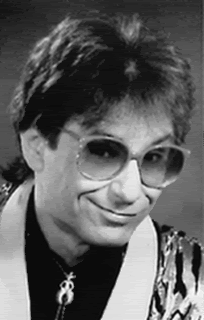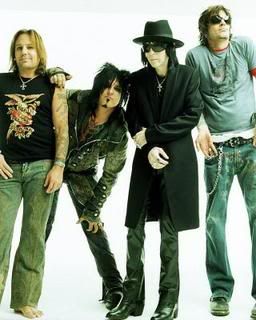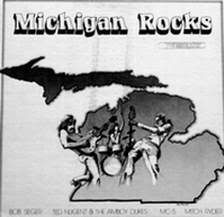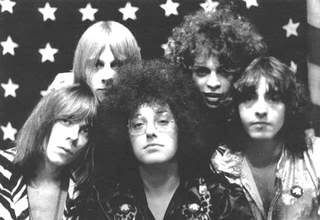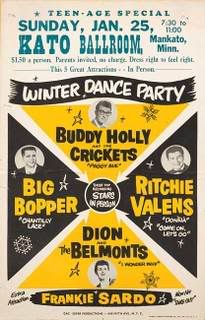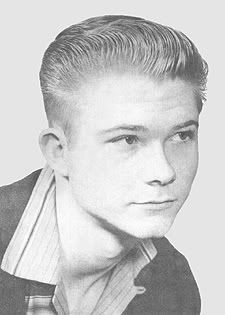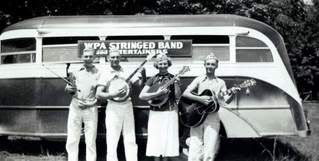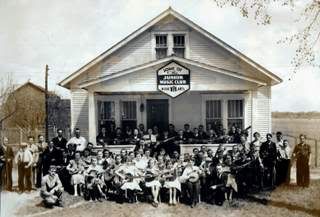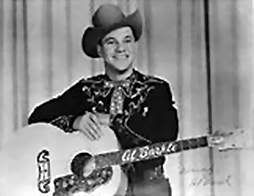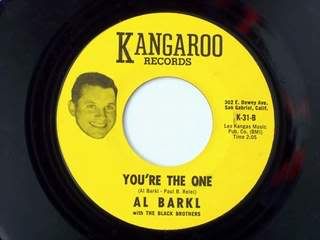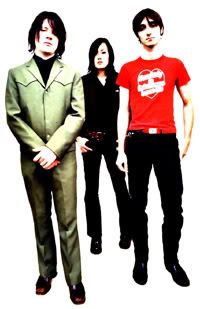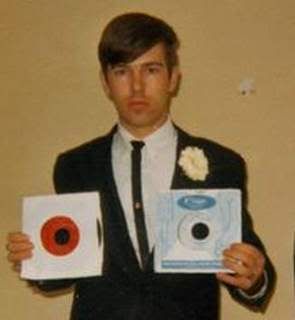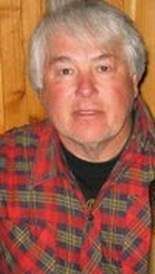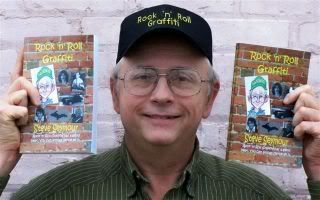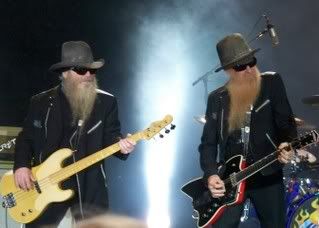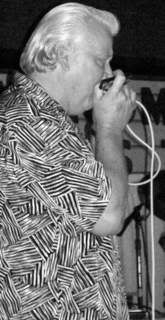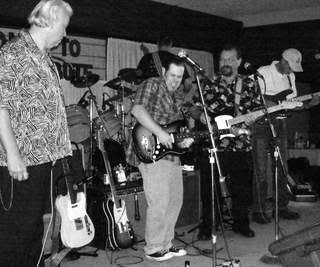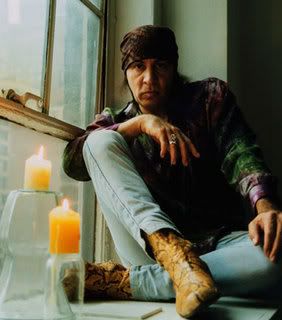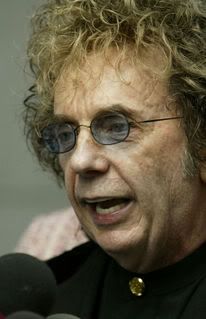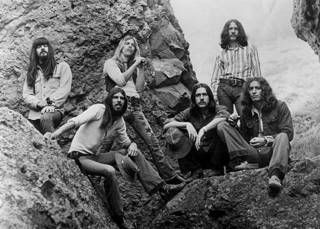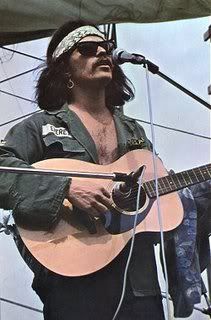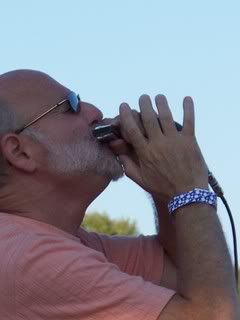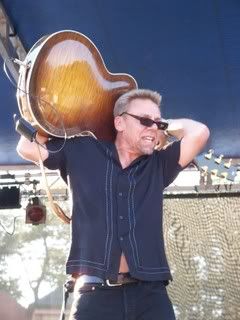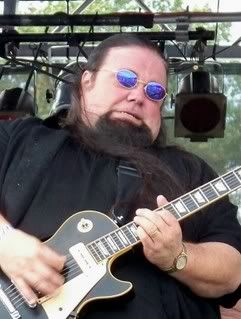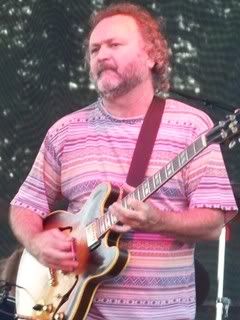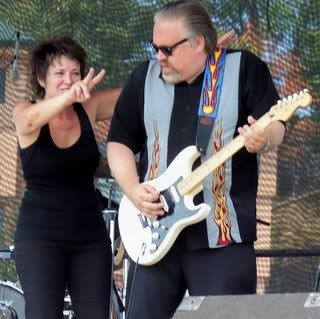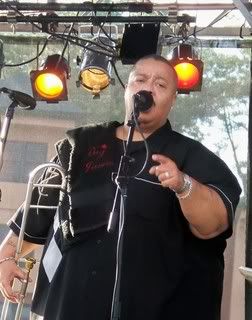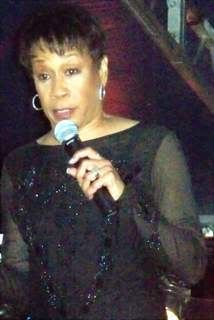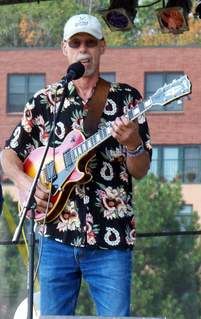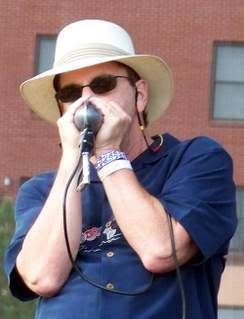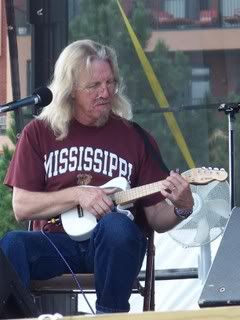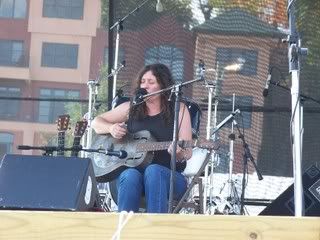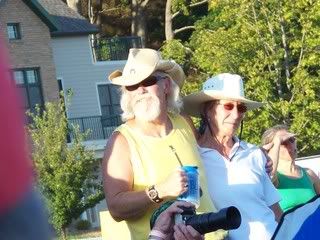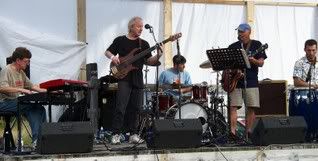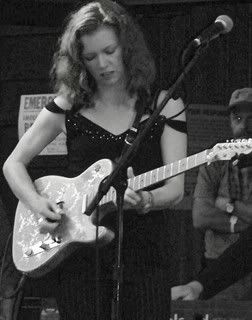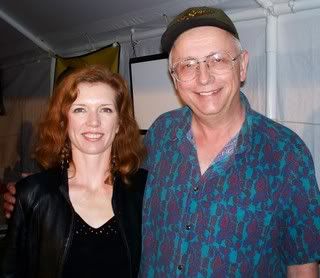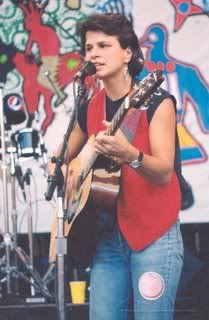
Tret Fure
By STEVE SEYMOUR
Tret Fure has played with many famous musicians in a career that stretches back to the 1960s, but she had to leave the Upper Peninsula to do it.
She has recorded and toured with Spencer Davis, issued a major-label solo album produced by Lowell George, and opened for such acts as J. Geils Band, Yes and Poco. After that early success, she became one of the first female recording engineers in the country, and continues to earn recognition for her work in folk and women's music.
Fure (pronounced FURY) lived in Marquette from 1963 through 1969, her junior and senior high school years, and performed in a folk duo with her brother Rob. "We played the local coffee house. It was a great place and I really learned to perform there. We played a lot of faculty parties at Northern, student union gigs and some church basements," Fure said.
"Growing up in the U. P. was hard as a determined musician. I had very few peers. I knew a few players at Northern, but I was pretty much on my own, learning songs by putting my ear against the hi-fi, and it was a hi-fi in those days."
As a musician, Fure felt isolated in the U. P., but things changed when she was accepted at the University of California in Berkeley. "I'd sit on the steps of Sproul Plaza with my guitar case open and sing every Bob Dylan, Joni Mitchell, James Taylor, Joan Baez and Tom Paxton song I knew. I gathered quite a following and made good spending money and the fuse was definitely lit."
After a year, she decided to pursue music full time, and moved to New York to play the hootenanny scene in Greenwich Village. "I had hopes of finding a manager and making it big," Fure told me.
She found a new manager who led her to Los Angeles where she was introduced to a female rock quartet called Fanny, famous for their song, "Charity Ball." "They were the first real all women rock band that could play their instruments," Fure explained. "I became good friends with the band members, moved into their house in the Hollywood Hills and through their keyboard player met Spencer Davis."
Davis, whose hits included "Gimme Some Lovin'" and "I'm a Man," was looking for a guitar player who could play acoustic blues. "I auditioned for him, as I was quite adept at Leadbelly style fingerpicking and 12-string slide guitar. Plus, I could sing. He hired me, I found a bass player, and the New Spencer Davis Trio was born."
The group toured extensively in 1971-72 and recorded his "Mousetrap" album. Fure wrote the long player's single, "What's Gonna Happen When the Rainy Season Comes." As luck would have it, Fure was "discovered" during one of the band's last shows at Santa Monica Civic Center and signed to MCA Records.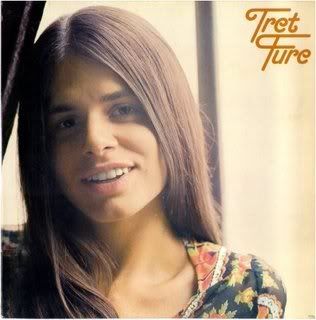
Tret Fure's first album
Lowell George, a founding member of the influential Little Feat, was brought in to produce "Tret Fure," her debut LP. "Lowell taught me so much about songwriting, producing and engineering and dealing with the insanity of the industry. At that time, there were very few women artists. Lowell taught me how to maintain my integrity, my rights, my publishing and helped me to became the independent artist I still am today."
The resulting record, which featured Bonnie Raitt, Little Feat, Van Dyke Parks and the women of Fanny, sold well, with the single "Catalina," making the west coast charts. Fure toured in support of that album, mostly in the south, opening for many top acts, including Black Oak Arkansas. "It was tough, but I definitely learned my chops. These were arenas that held 20,000 kids. I was the walk-in act, the artist who played while everyone filed in and took their seats. Mostly I played to the front rows, where people were actually seated and listening. I discovered many people were actually familiar with my music because of the airplay the album was getting. It helped get me through a very tough time."
Unfortunately, Fure was dropped by MCA when the management changed. She was picked up by United Artists where she completed her second solo album, but the company was sold and the new owners closed the music division to concentrate on movies. Still, during her time at UA, she learned record engineering and was able to support herself during a difficult period.
A decade after leaving her Upper Peninsula home, Fury was getting discouraged. "Any deal I could make was too much of a sacrifice, having to give up publishing, my creativity, my own songs. Plus, the music business was youth driven and I was approaching 30. I was not a hot commodity. But I discovered the burgeoning genre of women's music and found myself on the independent side of music. It suited me."
Consequently, she played to thousands of women who were "hungry for good music. "I became the house engineer and producer for Olivia Records and produced three solo albums on their subsidiary, Second Wave Records. I worked with them into the 1990s at which time Cris Williamson and I started our own label, Wolf Moon Records, and produced three duo albums on our label."
Relocating to Madison Wis., Fure has also returned to her folk roots and continues to enjoy a career in independent music. She owns her own label, Tomboy girl Records and has released four compact discs since 2000, all acclaimed by folk critics. She also owns a line of clothing and is vice president of Local 1000 of the North American Traveling Musicians Union. When she's not on stage, you can find Fure teaching guitar and song writing.
The singer and song writer hasn't forgotten about Marquette, either. Fure performed at the Ramada Inn on March 18, 2005, her 54th birthday, to celebrate the release of "Anytime, Anywhere," the 10th compact disc of her career. "I love playing Marquette and have a good following there between my usual fans and my family and friends. It's always on my itinerary.
"I have two brothers who still live there with their families. When I came back to the midwest after 30 years on the west coast, I would have moved to Marquette in a heartbeat. But, it's too hard to get out in the winter and my work involves so much travel. I still consider it home."
